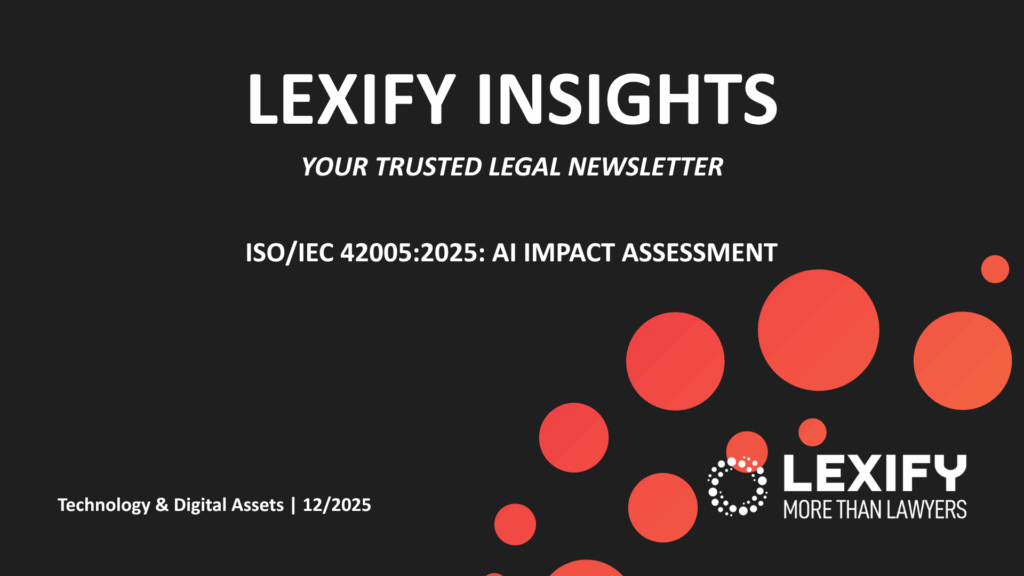Emanuele Gambula – Lexify 2.10.2024

When a Token is an Asset Referenced Token
Regulation 2023/1114 (“MiCA”, “MiCA Regulation” or the “Regulation”) applies to crypto-assets, which are defined as “a digital representation of value or rights that can be transferred and stored electronically, using distributed ledger technology or similar technology”[1]. Therefore, the first essential question to ask is whether the token qualifies as a crypto-asset and thus falls within the scope of the MiCA Regulation. To determine this, one must ask: is the token a digital representation of value or rights? Can it be transferred and stored electronically? Is the technology used a Distributed Ledger Technology (DLT) or something similar? If the answers to all these questions are affirmative, and the token does not fall under any other exceptions provided by the MiCA Regulation[2] (e.g., it is a financial instrument, a Non-Fungible Token, etc.), we can proceed with our analysis.
We must then consider whether the token maintains a stable value and is referenced to a value or a right. If this is the case, it is likely that the token falls under the category of ARTs (Asset Referenced Tokens) or the category of so-called Electronic Money Tokens (“EMTs”), which are defined as “a type of crypto-asset that purports to maintain a stable value by referencing the value of one official currency”[3].
However, if the token is referenced to a value or right, or a combination of both, including one or more official currencies, then we can assert with a certain degree of certainty that it qualifies as an Asset Referenced Token so-called “ART”. Some examples include stablecoins whose value is pegged to a commodity, such as gold, or a well-known stablecoin developed by a prominent social network, whose value would have been anchored to a basket of official currencies, including the U.S. dollar, the euro, the pound sterling, and the yen. By exclusion, one can also assert that an ART must be stable, and its value must not be tied to a single official currency, as this would instead fall within the definition of an EMT.
Authorization for an ART Issuer
In order to offer an ART to the public or admit it to a trading venue within the European Union – thus listing it on an exchange in Europe – a specific authorization is required. However, this authorization is not necessary if:
- the offer has a value of less than 5 million euros, calculated on an annual basis, and the issuer is not connected to a network of other exempted issuers; or
- the offer is directed exclusively at qualified investors.
Moreover, credit institutions are not required to obtain specific authorization for offering or admitting ARTs[4] to trading. Nevertheless, they are obliged to notify the White Paper, which must comply with the principles and requirements set out by the MiCA Regulation and its secondary-level rules[5]. Credit institutions are also required to notify the relevant European authority with a series of documents, including, for example, a legal opinion confirming the token’s qualification as an ART, a business plan related to the operational model, as well as all internal policies and procedures required for ART issuers[6].
Once the authorization is granted, or the White Paper is either approved or simply notified (in case of exemption), the ART can be offered or listed throughout the Union.
Acting Honestly and Professionally, Publication of the White Paper, and Marketing
The issuer is required to act honestly and professionally towards investors, ensuring fair treatment in all communications, which must be clear, accurate, and not misleading. It is important to note that equal treatment of investors is not a strict obligation and may be waived if the White Paper and marketing communications explicitly provide for preferential treatment of one or more investors.[7]
Moreover, the White Paper for the ART being offered or listed must be published on the issuer’s website, and it must be accessible from the start date of the public offering of the asset-referenced token or its admission to trading. The White Paper must remain available as long as investors hold the offered token.
With regard to marketing communications, they must be (i) clearly identifiable as such; (ii) accurate, clear, and not misleading; (iii) consistent with the information contained in the White Paper; and (iv) include a statement indicating that investors are entitled to redemption by the issuer, among other rights[8].
Issuers must also comply with certain disclosure obligations. For example, they must publish on their website the amount of outstanding asset-referenced tokens and the value and composition of the reserve assets, updating this information on a monthly basis[9]. These disclosure obligations are particularly important and closely tied to the condition of the reserve assets.
Relevant Internal Policies and Procedures
The MiCA Regulation requires issuers of ART, like Crypto Asset Service Providers (CASPs), to establish internal policies and procedures covering a variety of subjects. This section provides a brief overview of the key internal policies and procedures (collectively and individually referred to as “policies” “policy”) that are essential for ART issuers to operate effectively, with further details available in secondary-level regulation.
The main policies that must be in place include those related to complaints, conflicts of interest, and governance[10]. Specifically, governance policies should outline adequate internal control mechanisms, including sound administrative and accounting procedures. Additionally, the issuer must develop policies concerning the management of reserve assets, their custody, transaction validation, liquidity mechanisms for the tokens, redemption mechanisms, the DLT or similar technology used, agreements with third party service providers for managing the reserve assets, and the investment of those assets.
Reserve of Assets: Custody and Investment
The reserve of assets is a fundamental requirement for an ART issuer, serving to cover the risks associated with the perpetual redemption rights of investors. The reserve must possess certain characteristics, one of the most important being that it is distinct and separate from the issuer’s own assets, ensuring that the creditors of custodians cannot make claims on the reserve. Additionally, issuers must implement a policy to stabilize the ART.
The MiCA Regulation also governs the custody of the reserve of assets and sets limits on how the reserve can be invested. In this regard, the custody of the reserve, it must be held within five business days of the token issuance by a credit institution, an authorized Crypto Asset Service Provider for custody and administration, or an investment firm authorized under the MiFID II directive. Issuers must ensure that they designate custodians who comply with the limits and requirements set out by the Regulation.
As for investments, ART issuers may invest part of the reserve only in highly liquid financial instruments with minimal market risk, credit risk, and concentration risk. This may include UCITS funds under certain conditions[11].
Redemption Plan and Recoery Plan
Issuers of ART must consider that the MiCA Regulation grants token holders the right to request redemption at any time against the issuer of the tokens and with respect to the reserve assets, particularly when the issuer fails to meet obligations related to recovery, redemption plans, and reserve assets. These situations typically arise in cases of financial deterioration of the issuer or more general economic insolvency.
Therefore, upon the request of an ART holder, the issuer must proceed with the redemption by either paying an amount in funds (other than EMT) equivalent to the market value of the underlying reserve assets linked to the token, or by delivering the underlying assets to which the token is tied.
The ART issuer must therefore establish a redemption policy to follow in such instances. This document must be carefully coordinated with the so-called “Redemption Plan”, a more complex document containing specific elements, as outlined by secondary-level regulation[12].
The Redemption Plan is inherently connected to demonstrating the issuer’s ability to carry out the redemption without causing undue economic harm to the token holders or destabilizing the market for the reserve assets.
Another crucial aspect to consider is the development and maintenance of a so-called “Recovery Plan”, which outlines the measures the issuer must adopt to restore compliance with the applicable reserve asset requirements in cases where the issuer fails to meet these obligations.
The Recovery Plan includes provisions for maintaining the issuer’s services, timely resumption of activities, and fulfilling the issuer’s obligations in the event of significant risks that could disrupt operations. For the plan to be effective, it must detail specific recovery actions and options, such as:
- liquidity fees on redemptions;
- limits on the amount of asset-referenced tokens that can be redeemed on any given business day;
- suspension of redemptions.
Conclusion
Navigating the complexities of the MiCA Regulation is crucial for anyone who wants to issue ART token in Europe. From determining whether your token qualifies as an ART to securing the necessary authorizations and complying with the extensive obligations that follow, there are numerous steps involved in ensuring full regulatory compliance within the European Union. The MiCA Regulation demands transparency, effective governance, and diligent management of reserves, all of which must be carefully documented and monitored.
At Lexify, we specialize in crypto assets and are experts in helping issuers meet the requirements set forth by MiCA. Whether you need assistance drafting your White Paper, establishing governance structures, or developing comprehensive recovery and redemption plans, we offer tailored solutions to ensure your compliance. From obtaining the necessary authorizations to guiding you through secondary-level regulatory requirements, we have the expertise to support your business at every stage.
[1] See article 3(1)(5) of MiCA.
[2] See article 2(2), 2(4), 2(3) of MiCA.
[3] See article 3(1)(7) of MiCA.
[4] See article 16(1) e 17 of MiCA Regulation.
[5] See ESMA, Draft Technical Standards specifying certain requirements of the Markets in Crypto Assets Regulation (MiCA) – second package, July 3, 2024, available here.
[6] See article 17(2) of MiCA Regulation.
[7] See articles 27 and 28 of MiCA Regulation.
[8] See article 29 of MiCA Regulation.
[9] See article 30 of MiCA Regulation.
[10] See articles 31, 32 and 34 of MiCA Regulation.
[11] For further information please see EBA guidelines (final) to specify the highly liquid financial instruments with minimal market risk, credit risk and concentration risk under Article 38(5) of Regulation (EU) 2023/1114, June 13, 2024, available here.
[12] See EBA, Guidelines on redemption plans under Articles 47 and 55 of Regulation (EU) 2023/1114, March 8,2024 (not final), available here.
Connect with us
Thank you for taking the time to read our article. We hope you found it informative and engaging. If you have any questions, feedback, or would like to explore our services further, we’re here to assist you.

Follow Us
Stay updated and connected with us on social media for the latest news, insights, and updates:
Linkedin Lexify

